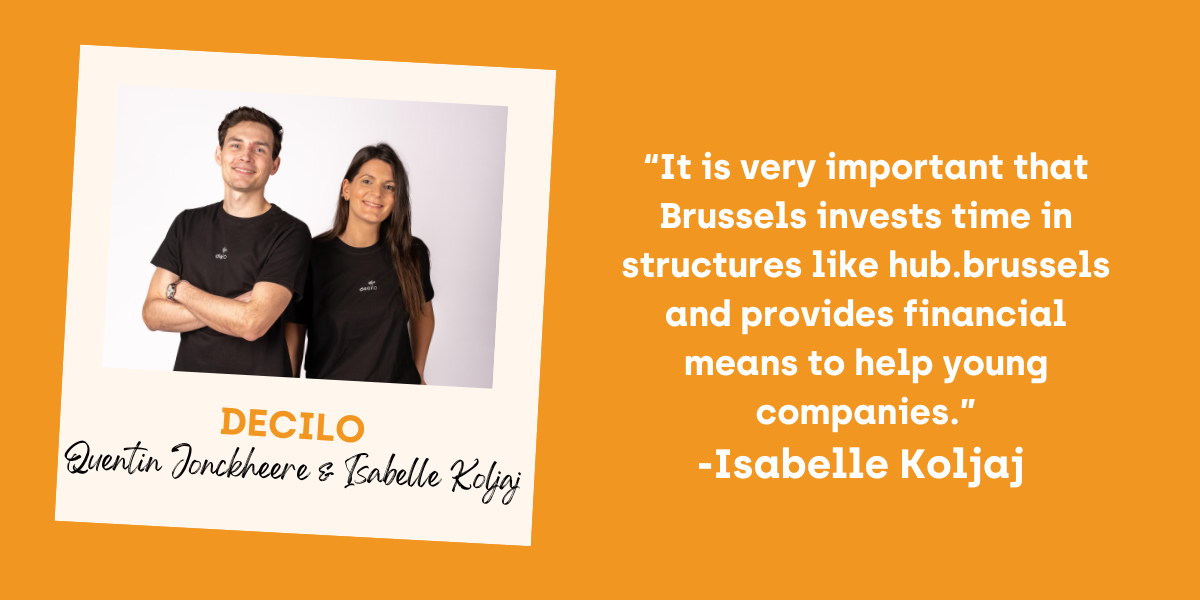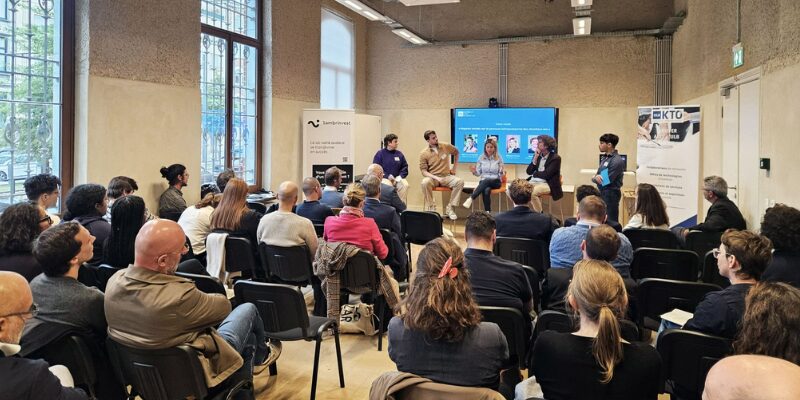Until now, ankle-foot prostheses have been uncomfortable and caused various issues for their users. However, Axiles Bionics, a dynamic start-up within the lifetech cluster of hub.brussels, is revolutionising the field. Their next-generation prosthetic mimics the musculoskeletal functions of the ankle and features AI control to anticipate future movements, significantly improving comfort and functionality.
Axiles Bionics’ journey began in Brussels in the mid-2000s when Pierre Cherelle, a trained physicist, was completing a PhD in robotics at the VUB research centre. “The declining interest in humanoid robots in the mid-2000s led our research group to shift its focus to the medical field, ” he recalls. “I worked extensively on exoskeletons, prosthetics and everything related to lower limbs to enhance users’ daily lives.”
Robotics and AI for ankle-foot prosthetics
One key observation struck the researcher: ankle-foot prostheses had barely evolved in over fifty years. They remained uncomfortable, causing significant issues for the individuals using them “like forcing people to walk in an old, rigid ski boot,” he says.
He was certain it was possible to do better – much better – and revolutionise the sector while greatly improving the quality of life for patients. Cherelle’s vision was to create a bionic prosthetic with a motorised ankle joint, complemented by an additional feature that turns it into a true miniature robot: AI control capable of anticipating future movements. This innovation helps bridge the gap between the prosthetic and the natural connectivity of the brain. Research in this area continues, with future generations of prosthetics expected to be even more advanced.
The entrepreneurial choice
In September 2019, Axiles Bionics was officially founded after securing its first round of funding, marking the start of its entrepreneurial journey. “The university research was not initially intended to create a business,” Pierre Cherelle explains. “My work attracted the attention of American and Chinese professors on my PhD board of examiners. If I had pursued a job at a large company after that, Axiles Bionics might never have existed! Indeed, to create a start-up in the healthcare sector, you not only need promising technology, but also an entrepreneur able to continue developing this technology while driving the project forward.”
Since it was founded, this young company has grown significantly. The original team of four founders has expanded to 17 employees. An engineering team has been created to carry out the necessary R&D work to develop the new generations of prosthetics, while the sales and marketing teams have also been strengthened. Already well-established in Belgium, Luxembourg, Spain and Germany with their first commercial product, the Lunaris prosthetic, a passive version of the bionic foot, Axiles Bionics now aims to expand its presence across Europe, the United States and worldwide.
The Formula 1 of prosthetics
One of the most significant advancements in the development of bionic prosthetics is a function similar to that of an electric bike, allowing the prosthetic to continue working even when the battery is flat, preventing it from becoming a dead weight.
This breakthrough has been validated through tests with nearly 300 patients, revealing the potential for a new product derived from the bionic foot. In late 2022, Axiles Bionics launched Lunaris, a passive and simplified version of their bionic prosthetic.
Another prosthetic, inspired by Lunaris, is being prepared for imminent commercial release, backed by social security reimbursements. At the same time, other innovations are under development and are expected to be launched soon.
Alongside these advancements in passive prosthetics, development on the original bionic foot continues. Pierre Cherelle, the founder of the Brussels-based company, emphasises, “Our expertise is focused on robotics, artificial intelligence and human biomechanics. What began as the design of a simple bionic foot has evolved into what we now call the Formula 1 of prosthetics.” Specialist teams continue to work on this bionic technology while others in the company focus on developing new products.
Realism
The founder and CEO of Axiles Bionics remains realistic: access to the latest technology can quickly become costly and targeted at a niche market. However, he is also optimistic: 85% of those who have tested the prosthesis so far report feeling as if they’ve regained full ankle function. Pierre Cherelle adds, “Every walking pattern is unique, like a fingerprint, and changes over time and with use. We are constantly working closely with prosthetics users with the ultimate goal of making bionic feet accessible to as many people as possible, as we initially planned when launching Axiles Bionics.”
Lifetech.brussels, a valuable ally
Throughout his journey in Brussels’ well-established MedTech ecosystem, Pierre Cherelle has found strong support from lifetech.brussels. “I participated in the second MedTech Accelerator in 2017,” he explains. “What I especially remember was the opportunity it gave me to create a network. Networking takes time but it is the best thing to do. Leading American universities such as MIT have understood this with their Alumni networks. Unfortunately, Belgian universities lag behind, but lifetech.brussels bridges this gap.” He also acknowledges the help he has received with certain initiatives and continues to be active in the community, notably as a member on the board of lifetech.brussels.
Future prospects
The CEO of Axiles Bionics plans to continue developing new technologies and expanding the company’s operations internationally. But above all, Pierre Cherelle has not forgotten his early passion: rehabilitation and industrial exoskeletons, which could benefit from the technological advances developed by Axiles Bionics. He is confident in the potential for future developments: “There is huge potential to create exoskeletons that interact seamlessly with the human body, integrating perfectly with its natural movements and improving quality of life,” he says. “Exciting developments lie ahead and our team is eager to take on these challenges.“
Website




